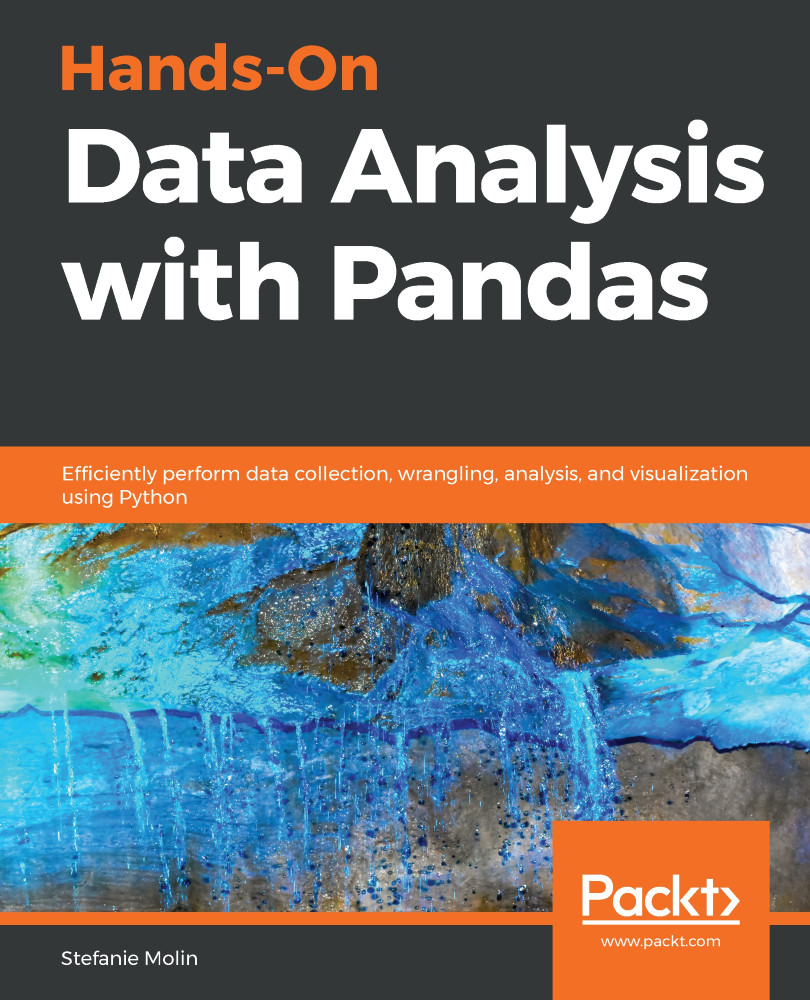Throughout this book, we have covered a lot of material, and you are now capable of performing data analysis and machine learning tasks entirely in Python. We began our journey by learning about some introductory statistics and how to set up our environment for data science in Python. Then, we learned about the basics of using pandas and how to bring data into Python. With this knowledge, we were able to work with APIs, read from files, and query databases to grab data for our analyses.
After we collected our data, we learned how to perform data wrangling in order to clean up our data and get it into a usable format. Next, we learned how to work with time series and combine data from different sources, as well as aggregate it. Once we had a good handle on data wrangling, we moved on to visualizations and used pandas, matplotlib, and seaborn to create a variety...


